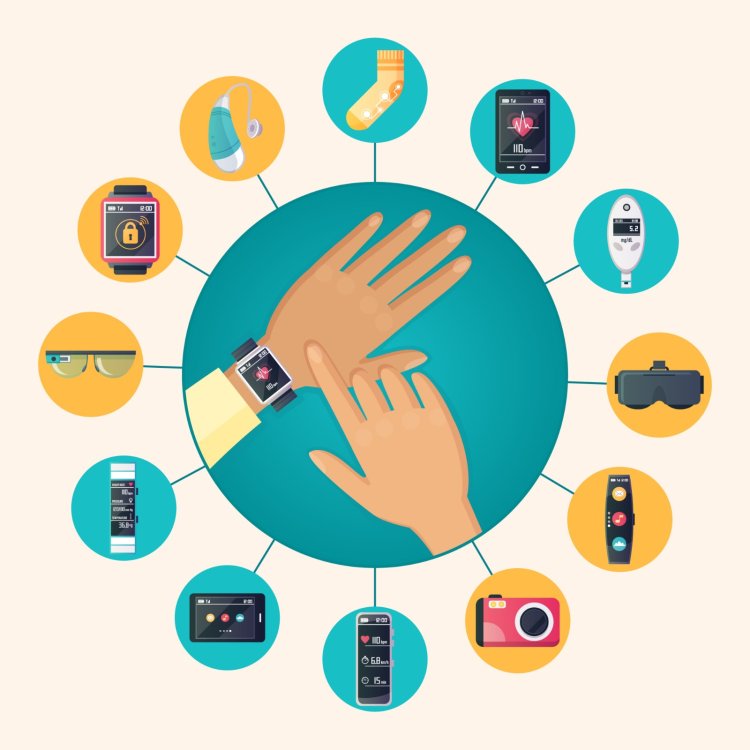Top -10 Wearable Health Devices Trends in 2023
Wearable devices will be increasingly used by individuals during 2023 to track their own health and exercise activity, as well as by clinicians to monitor patients remotely.

Wearable medical devices are electronic devices designed to be worn on the body, providing real-time monitoring and data analysis of the wearer's vital signs and health metrics. These devices have revolutionized the healthcare industry, providing patients with continuous monitoring, which can aid in the diagnosis, management, and treatment of a wide range of medical conditions.
These devices track physical activity, heart rate, sleep patterns, and other health metrics. They can also provide alerts for irregular heartbeats, stress levels, and other health concerns.These devices are used by people with diabetes to monitor blood sugar levels continuously,track heart rhythms and can detect abnormalities or irregularities, including arrhythmias, heart attacks, and other cardiovascular conditions. They provide real-time data and alerts for high or low blood sugar levels, allowing users to manage their condition more effectively.
It can monitor brain activity and control prosthetic limbs, allowing people with disabilities to regain some mobility and independence.
Wearable medical devices have numerous benefits, including improved patient outcomes, reduced healthcare costs, and increased patient engagement in their own healthcare. They can also provide healthcare providers with more accurate and timely data, allowing for more personalized and effective treatment plans.
Here are also some challenges associated with wearable medical devices, such as data privacy and security concerns, device accuracy, and integration with existing healthcare systems. Nevertheless, as technology continues to improve, and the demand for remote monitoring and telehealth services increases, wearable medical devices are likely to become even more prevalent in the healthcare industry.
Top-10 Wearable Medical Devices
- Sleep Management.
- Artificial Intelligence
- Telemedicine
- Hearables.
- Smart Eyewear.
- Wearable Robotics.
- Epidermal Technology.
- Smart Clothing.
- Fitness Trackers.
- Disease Management
As wearable medical devices continue to evolve, new trends are emerging that will shape the industry in 2023. Here are the top 10 wearable medical device trends to watch out for in 2023:
-
Greater Integration with Artificial Intelligence (AI): AI technology will increasingly be integrated with wearable medical devices to enhance data analysis, automate data interpretation, and provide more personalized and proactive care to patients.
-
Increased Use of Virtual Reality (VR) and Augmented Reality (AR): VR and AR will be utilized more in wearable medical devices to provide patients with more immersive and interactive experiences, such as guided physical therapy sessions and mental health treatments.
-
Expansion of Remote Monitoring: Wearable medical devices will continue to expand the scope of remote monitoring, allowing healthcare providers to monitor patients' health and vital signs from afar and provide proactive care.
-
Adoption of 5G Technology: The rollout of 5G networks will enable faster and more reliable data transfer, allowing wearable medical devices to transmit and receive data more efficiently, enhancing the accuracy and usefulness of the data collected.
-
More Focus on Mental Health: Mental health has become a critical issue in recent years, and wearable medical devices will increasingly incorporate features that monitor and manage mental health, including stress levels and anxiety.
-
Greater Collaboration between Wearable Device Manufacturers and Healthcare Providers: Wearable device manufacturers will collaborate more closely with healthcare providers to develop products that meet patients' needs and can be integrated into existing healthcare systems.
-
Use of Wearable Devices for Clinical Trials: Wearable medical devices will increasingly be used in clinical trials to gather data more accurately and efficiently, speeding up the drug development process and reducing costs.
-
Expansion of Wearable Devices into the Elder Care Market: Wearable devices will be adopted more in the elderly care market to monitor and manage age-related health conditions such as dementia, falls, and chronic illnesses.
-
Development of Smart Implants: Wearable medical devices will become more sophisticated, and smart implants will be developed that can monitor and treat health conditions, such as diabetes and heart disease, more effectively.
-
Increased Focus on Data Privacy and Security: As wearable medical devices collect and transmit sensitive patient data, there will be a greater focus on data privacy and security to protect patients' personal information and ensure compliance with regulatory standards.
These trends are likely to shape the wearable medical device industry in 2023 and beyond, enhancing patient care and improving healthcare outcomes.
What's Your Reaction?


















